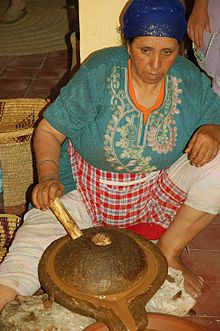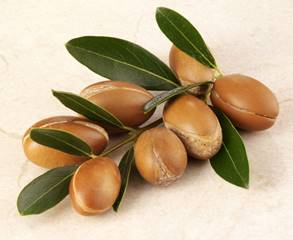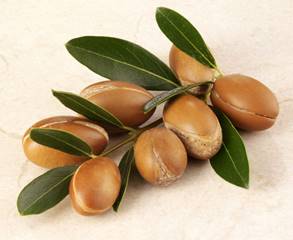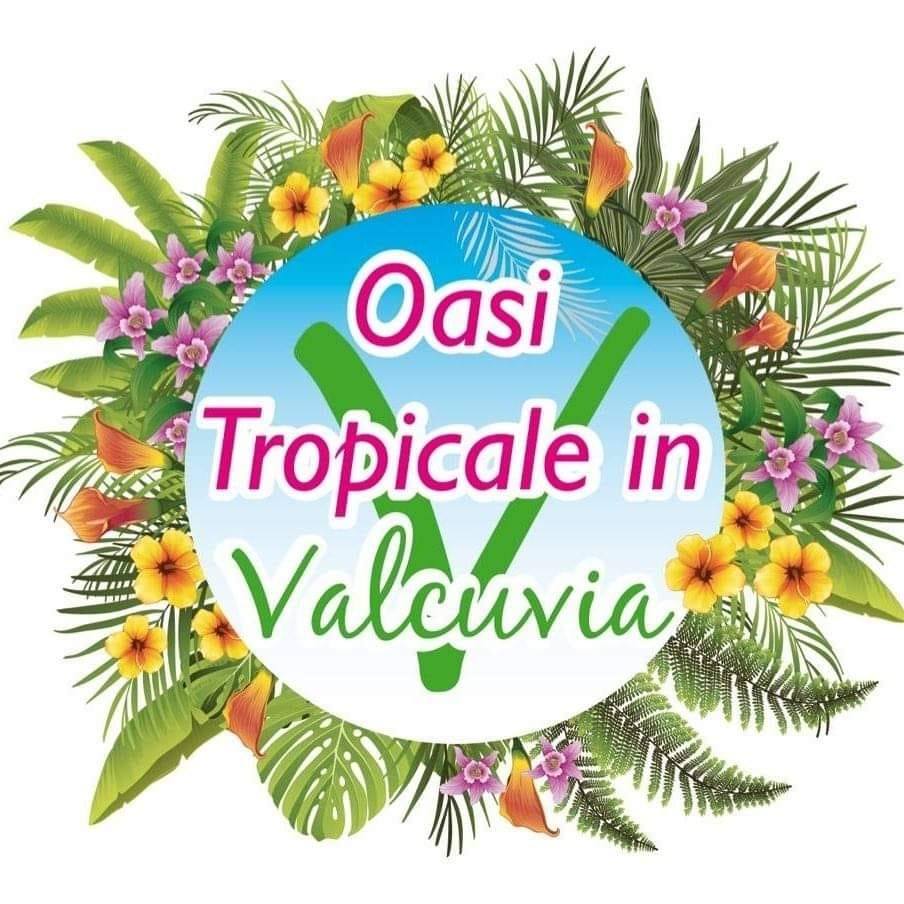-
ARGANIA SYDEROXYLON SPINOSA (ARGAN)
ARGANIA SYDEROXYLON SPINOSA (ARGAN)
Couldn't load pickup availability
MINIMUM TEMPERATURE SUPPORTED +3°C
(DATA REFERS TO AN ADULT PLANT IN OPTIMAL HUMIDITY AND SOIL CONDITIONS)
The argan or argania ( Sideroxylon spinosum L. ) is a tree belonging to family from the Sapotaceae , widespread in the western part of North Africa [2] .
The name Argan corresponds to the local name, in Berber language ( tashelhit ) and means oil.
As a residual cultural element, linked to the ancient Berber civilisation, the large argan trees have the value of symbols of life, and the one considered the oldest, in Tassila, near Tamanarte , said “Targante Nchick” , or wise tree, is celebrated every year with a popular gathering, with lunches, dances and traditional songs [3] .
Description


Argan is a tree with thorny branches (hence the specific epithet spinosum ), up to 8-10 meters tall, very resistant and can live for 150-200 years. Its shape is very characteristic: wide and rounded foliage, gnarled, tortuous and quite short trunk, often made up of several parts intertwined with each other. However, in difficult locations, the plant can take on the more modest dimensions of a small shrub.
Argan provides a wood very hard, used mainly as heating wood.
The leaves , dark green and leathery, serve as nourishment for camels and goats, and the latter do not hesitate to climb the branches to graze on them.
THE flowers , from white to greenish-yellow, appear between May and June. They are gamopetalous (i.e. with the petals of the corolla fused together), with a very short corolla tube and are gathered in inflorescences to glomerulus.
The fruit it's a drupa oval, fusiform, about 30 mm long, which when ripe is yellow-brown and which contains an extremely hard "nut" (formed by the endocarp woody and come on seeds ). Inside are up to three seeds sometimes commercially called "argan almonds". A medium-sized tree produces about 8 kg of seeds per year.
Distribution and habitat
The current areal of the species includes the south of Morocco , Algeria western, the northern part of Western Sahara and the north of Mauritania [1] [2] . The argan plant is considered a "relict" of the Tertiary : it, in fact, has existed in Morocco for 80 million years and probably covered vast surfaces of the Tertiary North Africa (which at the time was probably joined to Canary Islands ) and southern Europe . This vast range contracted in Quaternary due to the changes climate connected to glaciations , which would explain the current existence of some colonies in the area Rabat (region of Khemisset ) and much further north, near the coast Mediterranean among Ait Iznassen .
It grows from sea level up to approx 1 500 m of altitude [1] .
A further consideration of its particularity is that the Sapotaceae family is otherwise absent or very rare throughout the North African geographical area. Today the maximum concentration of these plants is found in Sous region .
One of the major problems linked to the survival of the species is the fact that traditional harvesting is carried out from wild, i.e. uncultivated, plants, normally "owned by the king", i.e. on state land. While on the one hand the government has provided for new plantings on state-owned land, the rigorous harvesting of the fruits compromises the natural reproduction of the species. Another factor that is very harmful to the survival of the species is the predation by goats that graze on state land, which do not limit themselves to tearing leaves and fruit from the ground, but climb up to the highest branches, completely stripping the plants. The extension of the cultivation of the plant, carried out in analogy to the cultivation of the olive tree, would overcome many of these problems, obtaining among other things an improvement in quality.
storage
There IUCN Red List classification Sideroxylon spinosum as vulnerable species . [1]
From the 1988 an area of approximately 830,000 hectares, natural location of sparse "argan forests", between Agadir And Essaouira was declared by UNESCO " Biosphere Reserve " with the name of Arganeto Biosphere Reserve [4] [5] .
Argan oil

There are two types of argan oil, depending on whether or not the kernels are toasted before use.
The cosmetic oil, from unroasted kernels, is lighter, is used by applying it to the skin and hair and is considered effective against hair loss, eczema , dehydration, skin aging and more, but due to ingredients that irritate the digestive system it cannot be used in the food sector.
Edible oil, darker, has a stronger flavor of toasted hazelnut due to the roasting of the seeds, and is used as an oil to season foods; it is very nutritious and constitutes, in minimal quantities, together with chopped almonds and honey, amlu , a very nutritious traditional pasta, consumed for breakfast. The consumption of oil also has a profound ritual meaning derived from Berber culture, such as wetting the mouths of newborns with a drop of oil, as a sign of good luck, or symbolically offering it to guests.
Due to the incredibly low yields (2 to 3.2 kilos, per 100 kilos of dried fruits), this oil is very expensive. Except for a minor part, produced and consumed locally, specialized production is almost entirely exported.
The population Berber of the Atlas has always used argan oil for its nutritional and cosmetic virtues. Like tea, argan oil is also traditionally offered to guests together with honey as a sign of respect and hospitality.
Sowing
The seeds of Sideroxylon spinosum they have a leathery seed coat, to soften it they can be immersed in warm water for a period of 2 to 4 days before sowing. Another solution could be to cover with a damp cloth at a temperature of around 20-25 °C. Plant the pre-germinated seeds in small trays with a light layer of soil, peat and sand and water periodically without excess, simply keeping the soil moist. Germination times vary from a few weeks to a month. [6]
RICHIEDI FOTO
RICHIEDI FOTO
Scrivimi su WhatsApp al +393472475878 per ricevere foto piante in vendita






